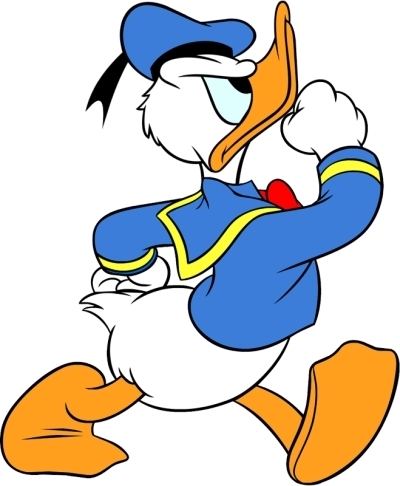Art as an Agent for Change is a non-profit arts organization that promotes artistic collaboration, community engagement, and social change through the arts.
Wednesday, October 31, 2012
Art Activist of the Week - Art Works Project
Tuesday, October 30, 2012
This Week in A.A.C. - Art Is Good Wine Tasting
Picture the scene. It's a Saturday evening, a bit chilly, but not too cold for your nice cocktail outfit. You enter to find two violinists providing entertainment to a room full of similarly well-dressed people, and you notice that a jazz duo is setting up to play next.
At the tables to your left is an array of quality hors d'ouvres and wines. You make your way to one of the black-clad hosts or hostesses to get your food and a glass of that white zinfandel you saw a moment ago. As you enjoy the music, you mingle with the people around you. This is shaping up to be a beautiful night.
Does this sound like an event you might enjoy? Next Saturday, November 10, A.A.C. will be hosting its Art Is Good Wine Tasting to benefit the arts in Milledgeville. You can RSVP by sending an email to Melissa Reynolds at melissa.reynolds@aacshutdown.org. The cost is $40 per person and $65 per couple, so if you bring a friend, you can enjoy a significant discount.
Fine Wine. Great Cause. Indeed, Art Is Good.
Monday, October 29, 2012
Tips and Truths with A.A.C. - Point of View
 |
| Where does the superstition of knocking on wood come from? Find out in A.A.C.'s Random Truth of the Week! |
- You, as the writer, need to decide from the beginning of your story whose point of view you are writing from. Is it going to be from the main character’s point of view? The main character’s best friend? An omniscient narrator? All of this is important to consider before you start writing because point of view needs to be clear through the whole story.
- Once you have chosen your narrator, think about how much that character knows about what is going on in the story. You don’t want to end up telling the reader something that character couldn’t know.
- If you choose to write from the point of view of one of the characters in your story as opposed to an omniscient narrator, give that character a distinct voice. It makes the story feel authentic, and it will help the reader differentiate between the narrator talking and the other characters talking.
- Consider the age of the character whose point of view you are writing from, especially if it’s a child. You want him or her to sound realistic.
- Keep in mind any biases your character has, such as people he or she doesn’t like or any deep-held beliefs he or she has. This makes your character feel like a real person.
- If you decide to switch between points of view of two or more characters, make sure they have distinct voices, and more importantly, make sure you keep the switches consistent. A good rule of thumb is to have one character narrate all the odd numbered chapters and have the other character narrate all the even numbered chapters.
Thursday, October 25, 2012
SYTYCD: Milledgeville Audition Corrections
Oct. 26th GCSU Student Activities Center Maple 216 3pm-6pm
Oct. 27th GCSU Student Activities Center Maple 216 2pm-5pm
Our Walter B. Audition Date had to be changed due to the Oconee Regional Fair.
Tuesday, October 16, 2012
This Week in A.A.C. - So You Think You Can Dance Milledgeville
 |
| Photo by Constantina Kokenes |
Dancer and Georgia College alumnus Grace Nichols lends her talents for SYTYCD Milledgeville.[/caption]
October 19 - Milledgeville Mall from 4 PM - 7 PM
October 20 - Walter B. Williams Recreation Center from 2 PM - 5 PM
October 26 - GCSU Student Activities Center (Maple 216) from 3 PM - 6 PM
Monday, October 15, 2012
Tips and Truths with A.A.C. - Creating Characters
This week's random truth is about hit singer Bruno Mars.
Before you begin writing a story, it is helpful to write down important information about your main character or characters. This will give you some grounding in your story. Here are some tips to get started.
- Start with basic information. Is your main character human? If yes, specify the gender, be it male, female, or somewhere in between. Write down your character’s age, whether he or she is in school (specify whether elementary, middle, etc.) or has a job. Make note of what the job is, if your character has one. Include family members and whether or not your character is married, single, or in some kind of romantic relationship.
- Next, think about your character's physical appearance. Tall and lanky? Short and fat? Tall and fat? Short and skinny? What color hair? Brown? Red? Black? You get the idea. However, if your character is not human, come up with a name for the type of living organism your character is and attributes of it. What does it look like? Where does it live? How does it typically behave? How does it reproduce? Does it have any special powers? Any enemies or predators?
- Next, describe your character’s personality. Is he or she witty, kind, or selfish? What are his or her fears? How does this character deal with authority?
- Finally, describe your character’s likes, dislikes, and quirks. What is your character’s favorite color(s)? Movie(s)? Book(s)? TV show(s)? With quirks, make them as specific as possible. This makes your character feel more real. For instance, does your character only eat green M&Ms? Have a favorite pair of sneakers/flip-flops/sandals that he or she must wear everyday, no matter what the weather is like? The sky is the limit as long as you are specific.
- Now, knowing all of this, you are ready to put your character into the context of your story. To do this, put your character in a situation out of his or her status quo and write down how your character would deal with this situation. A good way to think about this is that your character wants something badly but is having a hard time getting it.
- As you write your story, keep your notes you made about your character with you so you can refer to them and make changes, if needed. The most important thing to remember when creating characters is to be as specific as possible. The more specific you are, the more authentic and real your characters become.
Happy Writing!
Random Truth of the Week: Bruno Mars was one of the songwriters for Cee-Lo Green’s hit song “Forget You.”
Saturday, October 13, 2012
Art through Technology - Making Future Magic
Light photography began in the early 1900s with Frank Gilberth. This man and his wife were able to track the motion of manufacture workers by using small lights and the open shutter of a camera. Eventually, people would latch onto this idea and begin to light paint.
This 'light painting' was a method of using light and a low shutter speed to literally draw with light. Light painting has been around since the 1940s and with all of the new technology today it has been adapted and changed over time.
Probably the most prolific of modern light painters would be the group known as Making Future Magic. During May, June, and July of 2012 this group worked with another group called BERG. BERG is a design consultancy based in London that helps companies research and develop their technologies and strategy. Together the two teams created two full stop-motion films made completely of light painting.
However, unlike the Gilberths who used tiny flames to track manufacture workers, Making Future Magic developed their own way to light paint by using an iPad. The team also developed the software they are using to create their paintings and stop motion films.
Making Future Magic puts everything it wishes to turn into a light painting through an entire animation and runs through it what they jokingly call 'the CAT scan'. It's exactly what it sounds like: Each block or letter is broken up into a single line.
After going through the process of dealing with the animation itself, the 'CAT scan' is then transferred to an iPad. With a camera and tripod in hand, the team at Making Future Magic set off to find the sets for their pictures. Once they are ready, they use long camera exposures to record the motion in space to produce their 3-D light forms.
While light painting has been around for years, this new method to approaching it opens up a world of possibilities. The team has inspired several groups to also pursue light painting with different mediums and perhaps even sparked a new found interest in a relatively new art style.
Wednesday, October 10, 2012
Art Activist of the Week - Yes! Magazine
When you walk into the checkout lines of your favorite grocery store, you might take time to notice the various magazines displayed off to the side. Most will consist of glamorous smiles on the cover or perhaps bold headlines about a celebrity’s personal life.
You may grow tired of all the superficial beauty and diet tips, news on what stars look best in a bikini, or pages of nonsensical advice on how to please your man.
It would be nice if our society took more time to focus on what’s really important.
Luckily, there is such a thing as a magazine that wants to do more than just occupy your time when you want simple entertainment. Yes! Magazine would rather stimulate your mind with world events and ways that everyday people can get involved.
On every cover you’ll see their slogan “Powerful Ideas, Practical Actions” slogan. They want readers who want to take part in creating a better world, and their mission is to give you the most practical ways possible. This is precisely why this magazine stays nonprofit and stays running by the energy of enthusiastic volunteers with a commitment to change.
While this magazine covers a myriad of topics, there is a special section set aside for art and activism. You’ll be introduced to incredible stories of dancers, painters, or even beat boxers who have found a way to use a creative talent as a form of activism.
Yes! Magazine carries the same ideal that Art as an Agent for Change does: being an activist isn’t meant to be glamorous or sexy. It takes work, dedication, and sometimes deviating from the norm or what’s popular.
It’s safe to say that Yes! Magazine is not your average grocery store rack magazine. For this, Yes! Magazine is A.A.C.'s Art Activist organization of the week.
For more information, click the link below.
Tuesday, October 9, 2012
This Week in A.A.C. - The Office
Art as an Agent for Change started in Milledgeville on the campus of Georgia College, but one necessary thing was fairly difficult to obtain for a short while: an office. We were offered a permanent space in the Georgia College Cultural Center just last year, and we gladly accepted.
The benefits of a common space to call our own were apparent almost right away. We wouldn't have to worry about finding a location for both planned and impromptu meetings. We would have a single area in which to store documents, records, and other important items.
And my personal favorite: we would get to decorate.
I don't mean that in the "throw pillow here, pointless decorated box there" sort of way. Of course, aesthetics must be considered, but as an arts organization, we wanted a place to display the works of our members as well the people whom we support. Hence, wall decorations like the one pictured above--a painting commissioned specifically for A.A.C.'s office and created by one of our members--acquire more meaning than mere eye candy.
They reveal our mission to educate, to inspire, and to entertain, and our dedication to social justice by means of the arts. It is our hope that seeing the faces of such dynamic figures as Angela Davis, Andrea Gibson, and Saul Williams will provide inspiration to all who visit us in our office and any who work for social uplift in their communities.
If you like what you see or would like to contribute your own socially motivated artwork, share this article and follow the instructions under the connect tab of the website!
Monday, October 8, 2012
Tips and Truths with A.A.C. - Writing Schedules
Read this post to see how you can lasso in your writing times and learn a random truth about Wonder Woman!
Having a schedule for when you are going to write is a good way to make writing a habit and to help you get better at it. Here are some tips as you create your schedule.
- Choose a time that does not interfere with work, school, or any other obligations that you have. The best way to figure this out is to write out the days and times for everything you do during a typical week, and see what times are available.
- Pick at least one to three days to designate to writing. That way, you won’t feel overwhelmed, and if you happen to miss a day, it won’t be a big deal since you have one or two other days to work with. However, as you get more comfortable with writing, try adding a day every week or two weeks, the goal being to write every day. How fast you do this is up to you.
- Think about what time of day you are most productive. Are you a morning, afternoon, or evening person? Doing this will help you best use the time you have to write.
- Decide how many words you want to write per day. Start with a low number, such as three hundred words a day, and add fifty or one hundred words each week.
- Think about how much time you want to spend writing per day. Start with thirty minutes each day so you don’t overwhelm yourself, and add time every week or two weeks, depending on what works for you.
- Once you have a schedule planned out, pick a day for revision so you can look over the pieces that you have written during the week. Pick the two or three pieces you like best to revise.
- Be flexible. While it is important for you to stick to your schedule as much as you can, it is also important to realize events or problems may come up, and you may not be able to write that day. That’s fine. Figure out another time to write, and stick to that day.
- Be patient. The first schedule you come up with may not work for you, and that’s all right. Readjust as much as you need to, and remember that writing is a very individual process. Thus, finding out what works for you may take awhile. But when you do find that perfect schedule, it will be worth it.
Happy writing!
Random Truth of the Week: Wonder Woman’s “Lasso of Truth” used to be called the “Lasso of Obedience”.
Wednesday, October 3, 2012
Art Activist of the Week - Sing for Hope
Singing is an art form that can be very personal. It’s not something that we can see, nor is it something tangible. It comes from within a person, but it has the ability to touch all others who hear it. This makes it a great tool to uplift a community. Singing may be cathartic, but it also inspires and gives hope.
This was the idea that Monica Yunus and Camille Zamora had in mind when they created the organization Sing for Hope. They believe that when art and volunteer work join hands, something powerful is created.
These women strive to utilize their beautiful soprano voices, as well as their acting experience, to raise funds and awareness for a variety of different causes aimed at making underprivileged communities stronger and more supported. They’ve taken it even further by giving others an opportunity to do the same through their programs involving incorporating communities into projects and activities where all can come together and showcase their artistic talents.
The program Community Arts encourages charitable activities that benefit humanitarian non-profit organizations, while making art available to all. Art U is aimed at the youth, helping them to foster their talents and teaching them that these talents are most enjoyed when used as a catalyst to change the world around them. The Healing Arts Healthcare Outreach is designed to provide concerts and bedside performances to patients who could use a lift in their spirits.
Sing for Hope embodies the meaning of the phrase "art as an agent for change." Art is infectious, like a warm smile, and it is meant to be shared with all those whom we come across. For using art to bring communities together, Yunus and Zamora of Sing for Hope are our Art Activists of the Week.
Tuesday, October 2, 2012
This Week in A.A.C. - Poetic Notions Pizza Power Meeting
This year promises to be pretty exciting, and the Poetic Notions Pizza Power Meeting was just a teaser for some of the programs that A.A.C. has in store. Pizza helped immensely with brainstorming some new ideas for the Poetic Notions Poetry Fest held every April for the past six years.
For 2013, Poetic Notions is getting bigger and better with the continuation of the Youth Poetry Slam that began last year. There are also some other expansion plans in the works.
Whether you are a longtime fan of Poetic Notions or a newcomer to the slam poetry scene, an artist, activist, or arts activist, or just an interested person, feel free to contact us and learn more about the program. We look forward to seeing you in the crowd when the Poetic Notions Poetry Fest is unveiled in the Spring!
Monday, October 1, 2012
Tips and Truths with A.A.C. - Writer's Block
Oh writer’s block. We know it all too well, don’t we? Staring at a blank page in a notebook or on a computer, fingers poised to type or pen at the ready, and you’re just waiting for those brilliant pieces of prose to start flowing on the page like every inspirational cliché you have ever heard in your life and…
Nothing. Nada. No matter what, you have no inspiration, and there is nothing you can do about it. Notice a trend here?
On that note, while there is no way to cure writer’s block as it is unfortunately a part of life, there are ways to combat it. These are some ways that worked for me, and perhaps you will find them helpful as well.
- Take a break. No, really, I am being serious. Take a break! If your brain feels like it is turning into banana pudding that’s been left in the fridge for a week, or you just feel distracted (oh look, a giant hamster!), you need to take a breather. Go outside for a walk, or listen to some calming music. Read a book. Do some yoga. Whatever relaxes you and gets your mind off your work, do it for at least ten minutes. You brain will thank you for it by making you much more productive when you come back to your writing.
- Can’t figure out where the plot is going? For this problem, it’s a good idea to write out what has happened in your story so far, and then ask yourself what could happen next, or where you want your story to end up. Writing a summary of what’s happened up to this point will help you focus on the important plot points of your story, and it will help you focus on how you can keep your story going or how you can bring it to a satisfying conclusion.
- Add another character. If you feel like your main character of your story is going nowhere, try adding another person for him or her to interact with. It can be an antagonist, a best friend, his or her mom--whatever works for your story. Having your character interact with someone else can help bring out qualities in him or her that you might not have discovered otherwise, and can help move the plot of your story along.
- Last, if you are feeling really stuck and none of the above strategies are working for you, talk to someone you know is a creative writer, be it a teacher or best friend or anyone else you think will help you. Talking it out with someone you trust and getting another perspective can help you see your story in a new light. Also, if you are a beginning writer, it is good to have someone with lots of experience whom you can talk to when you are running low on inspiration.
Happy writing!
A.A.C.'s Truth of the Week: Donald Duck was banned in Finland for not wearing pants.













